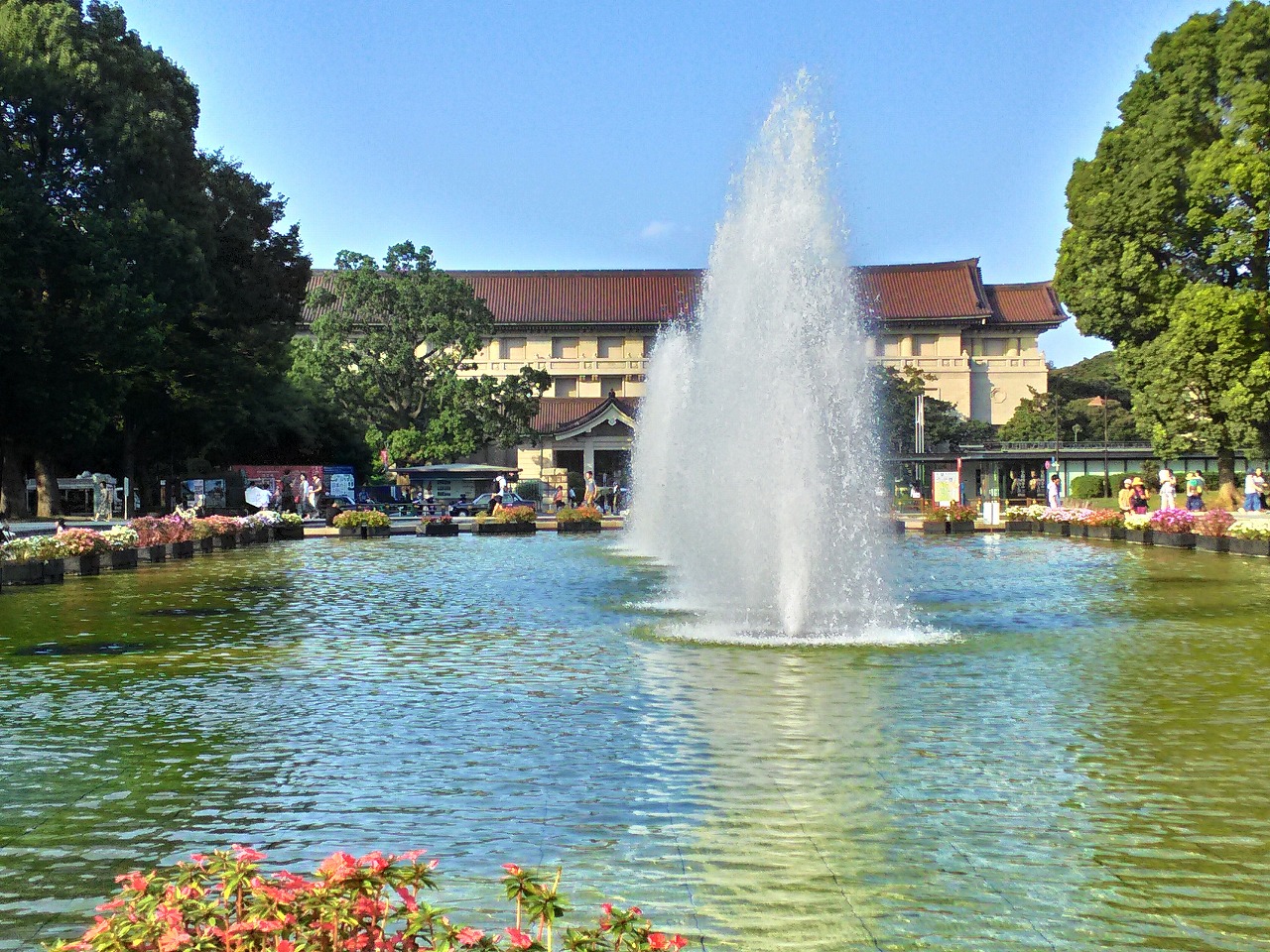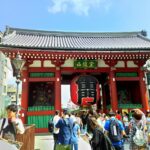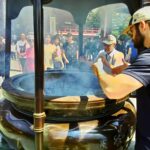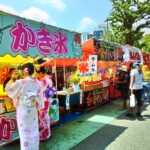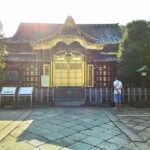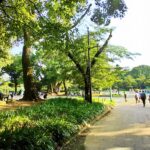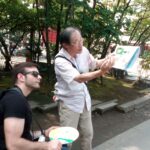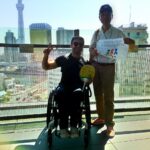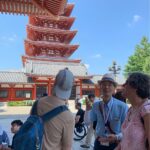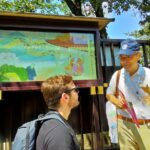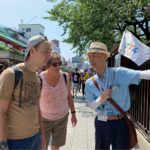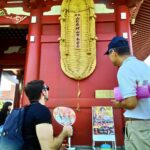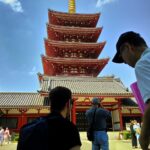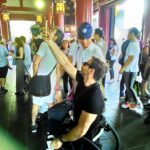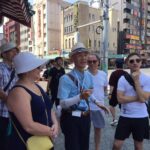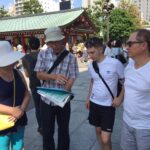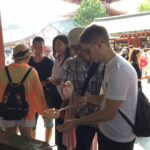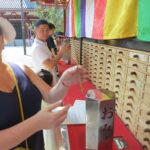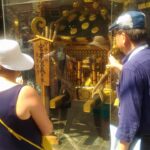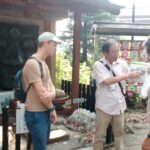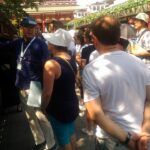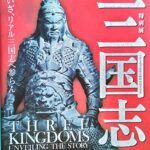Thank you for joining our Tokyo Free Walking Tour in Asakusa and Ueno.
On that day, the 25th of August, we welcomed 6 guests on our walking tour.
These people came from different regions of the world, including Canada, Chile and Netherlands
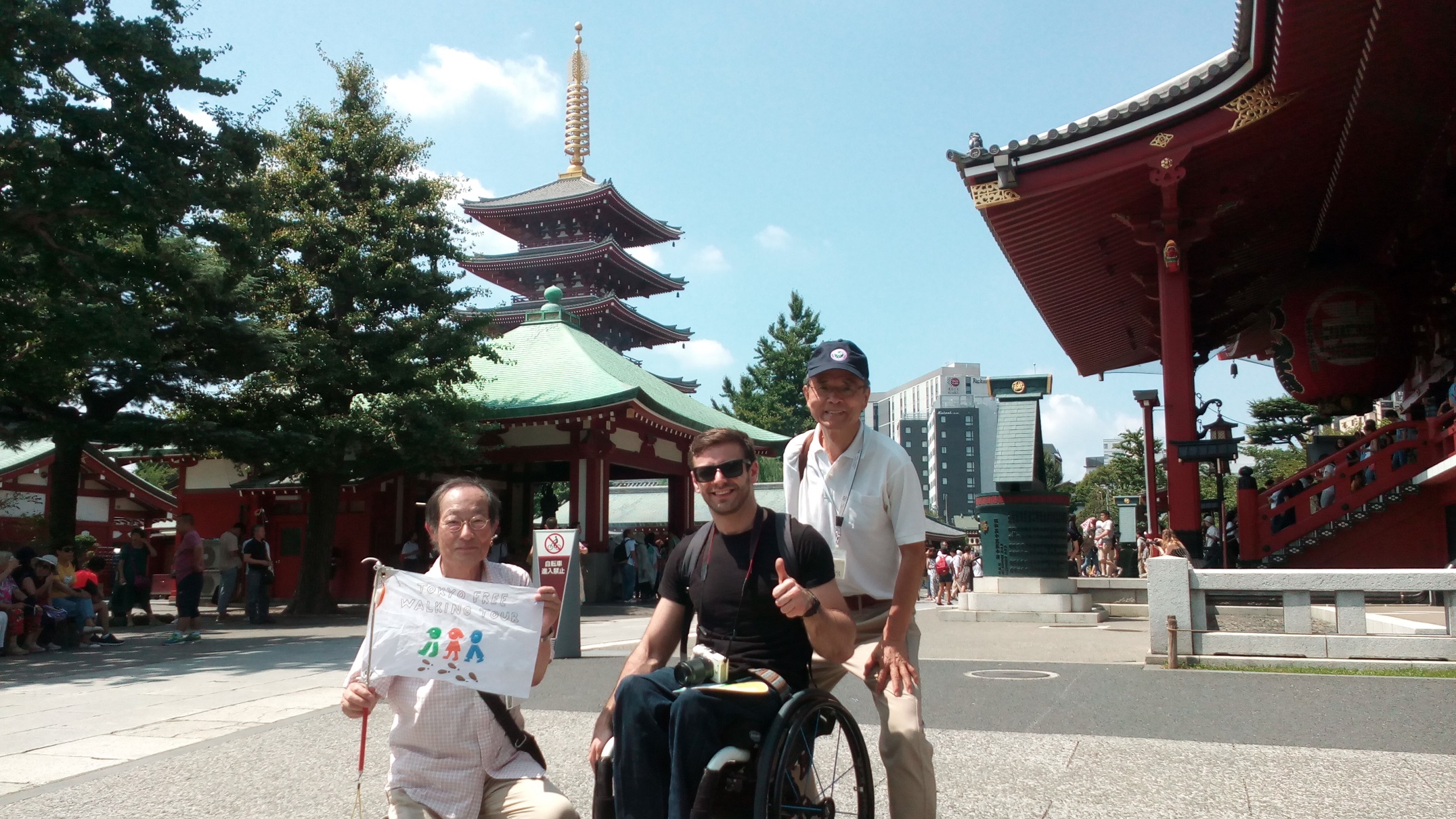
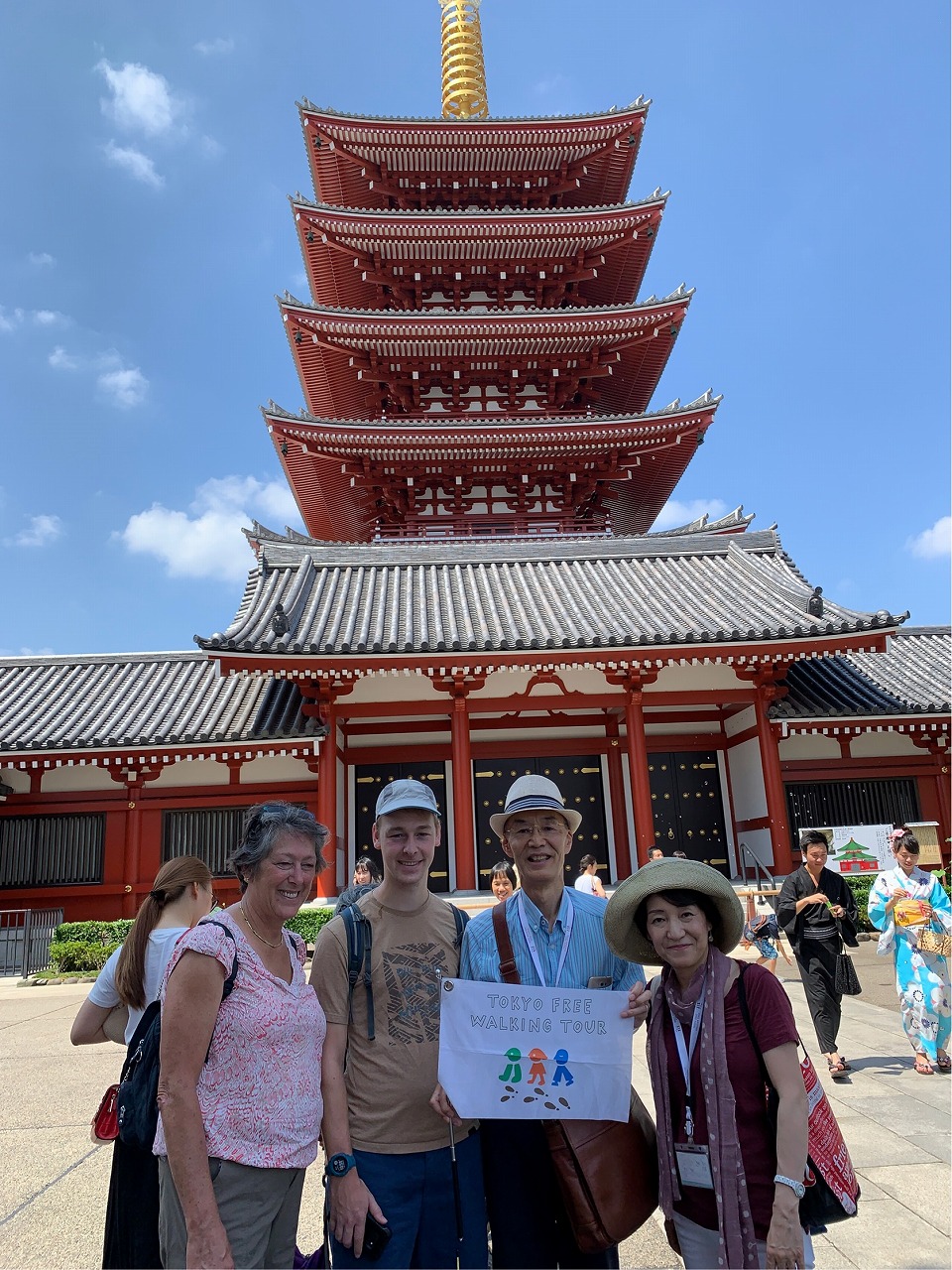

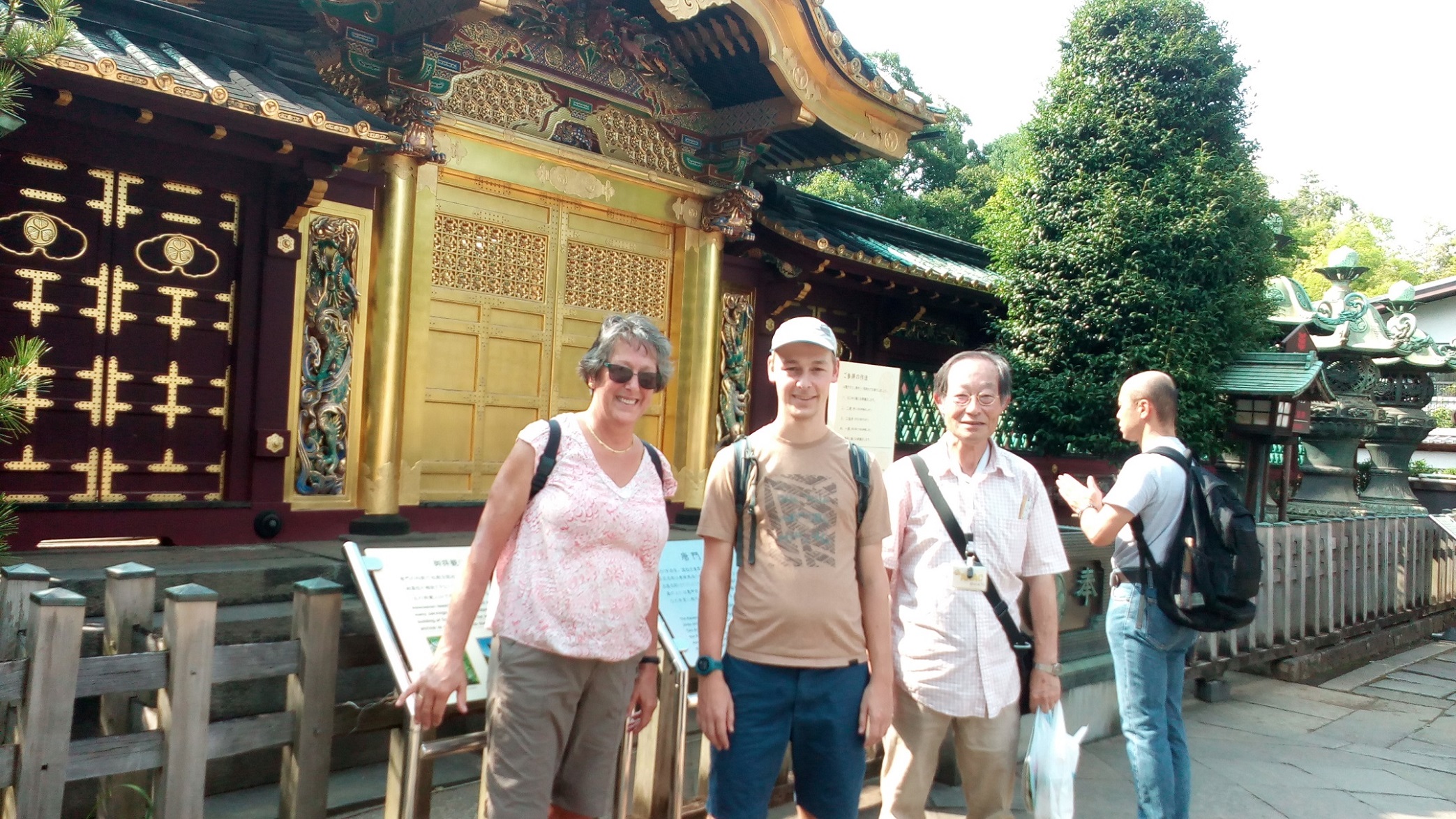
Finally, peak time of summer season is coming to an end.
Seemingly, we no longer experience a sweltering day, which started early in August following rainy season and left unbearable sensation of scorching days in Japan.
Under these seasonal changes, we met 6 people at Ueno and Asakusa.
At first, we started our morning tour at 10:00 A.M. in Asakusa.
Our walking started from an iconic location in the area named “Kaminarimon Gate” or Thunder Gate and ended at Asakusa Shinto Shrine.
- Thunder Gate in Asakasa
- An incense burner in Asakusa
- Food stalls in Asakusa
- A stuffed panda in Ueo Station
- A Shinto shrine in Ueno Park
- Ueno Park
Upon arriving at the main hall of Sensoji Buddhist Temple, a lot of people were surrounding an incense burner and bathing the smoke from there. Due to religious faith, this smoke is believed to heal their wounds.
Eventually, appealing smells of food wafting out of food stalls come into our nose.
Walking and eating is also one of the attractions for temple visitors.
Meanwhile, at the concourse of Ueno Station, a large stuffed panda warmly welcomed passenger.
This adorable animal symbolizes Ueno Park because a pair of pandas grows in Ueno zoo.
In the afternoon, at Ueno, we greeted two people again who joined our Asakusa morning tour on the same day
With ninety minutes of easy walk around the paths of the Ueno Park, we can visit Shinto Shrines, a Buddhist temple, museums and other distinct locations.
Our guides eagerly introduce these sports to inspire our guests to get interested in the historical background of Ueno Park, as stated in our blogs.
Tokyo National Museum, which is situated at the middle of Ueno Park hold attractive exhibition for the 40th-anniversary celebration of the cultural relationship between Japan and China titled “Sangokushi”, or “A History of The Three Kingdoms Period” in Ancient China
The history dates back to 1800 years ago, in China.
It is a massive legend that is based on the country’s history.
The legend starts from the time that the chaotic period late in Han Dynasty was finished, and the Chinese empire was split into three, and led by three leaders, namely Cao Cao, Liu Bei and Sun Quan.
They simultaneously established three states – Cao Wei, Shu Han and Dong Wu respectively. However, the three leaders and their nations were in conflict with one another.
Their offensive and defensive interaction that lasted for a half century served as inspiration for numerous works of art like poetry, literature, and paintings.
The history of the three kingdoms was so widespread that its influence can not only be observed in China, but also in Japan.
Aside from the historical and cultural influence of the Sangoku-shi, the three strategic leaders along with their respective empires have also been featured in newer forms of art in Japan, like video games and comic books.
These modern reimagining of the Sangokushi aims to attract younger generations and teach them how to improve their tactics through virtual play, all the while learning about history.
Even though Sangokushi happened thousands of years ago, Japanese people still use proverbs based on the historical span of alliances and battles as a guide that gives perspective to people’s lives.
(By Arac)

